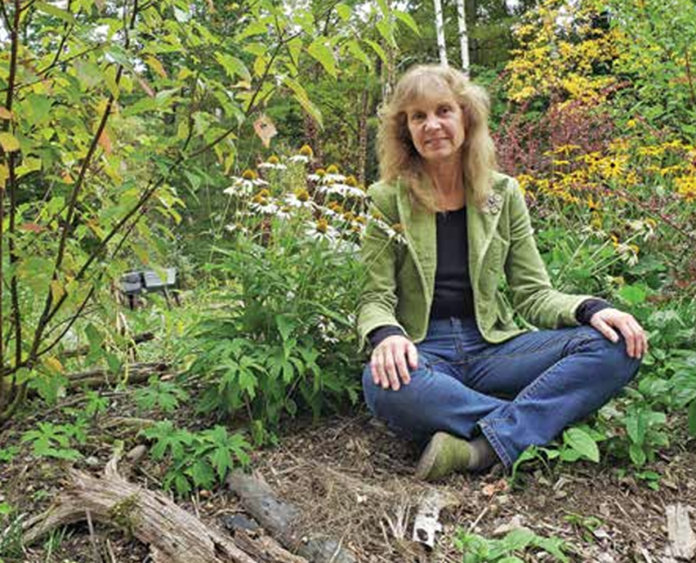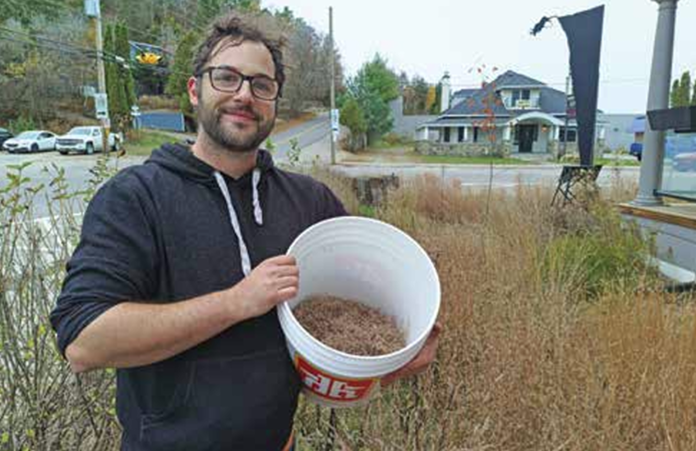While Dysart et al council this week toyed with the idea of a lengthy deferral for proposed changes to the township’s official plan (OP) and zoning amendment bylaw – which would allow certain structures to be built closer to a lake’s shoreline – elected officials indicated, following a Nov. 25 public meeting, they’re ready to approve a new policy.
Council has spent much of 2025 discussing a proposal that would allow waterfront property owners to install any one of a gazebo, shed or sauna within feet of, or in one case actually on, the shore. In his staff report, director of planning Jeff Iles noted the amendment would see gazebos allowed within zero metres of shore, a shed within five metres, and a sauna within 10 metres.
“Currently, no buildings are permitted within the water setback. The amendments are looking to update the policy to allow one accessory building,” Iles said.
The director had previously recommended against proceeding with the change. Current rules stipulate any structure has to be located at least 20 metres from the water. After a thorough public process, which included releasing a survey, holding two open houses and, before this week, one public meeting, Iles questioned whether there was enough public demand to justify altering policies that have been in place for over 20 years.
‘We believe science has not been applied’
In the survey, 56 per cent of 735 respondents said they were in favour of the change, with 40 per cent opposed and four per cent unsure. At a July public meeting, one of 18 speakers supported the plan.
It was a different story on Tuesday, with more of an even split between delegations – four for and two against.
Following a lengthy discussion, council appeared to favour deferring the issue again, with councillors Pat Casey and Carm Sawyer eager for more public feedback. Mayor Murray Fearrey suggested tabling until next year’s municipal election, where the township could hold a referendum.
After Iles cautioned against delaying, noting how anyone who has wanted to provide comments has had ample opportunity to do so, elected officials pivoted. They started to talk about how they could make the amendments more palatable for those opposed.
“If we change the setbacks at all, would that be beneficial? If we said gazebos had to be a bit further back, sheds too, would that appease anybody,” Sawyer asked.
Iles felt there was a “happy medium.” After some back-and-forth, council landed on allowing gazebos to be placed five metres from a lake, while saunas and sheds would remain where they are – a 20-metre setback for saunas and 20-metre setback for sheds on properties built before 2005, or 30-metres for those constructed after.
Iles said he would try to bring an amendment back to council for approval at its Dec. 9 meeting.
What was said
Speaking to the suggested rules – 10 metres for a sauna, five metres for a shed, and zero for a gazebo – Iles said the only way staff felt comfortable agreeing with that was by imposing three requirements – prior to construction of an accessory building, the shoreline vegetation must be restored to a natural state; the development area is not increasing beyond what is currently permitted, which is 20 sq. metres for all combined structures, including decks and stairs; and to increase enforcement.
Council felt those conditions, particularly the one for increased enforcement, would be difficult to meet, hence the change in direction.
Iles noted the township received 38 written comments addressing the change, with 20 opposed, five in favour, and 13 asking question/providing comments but offering no opinion.
Carolyn Langdon, representing the Lake Kashagawigamog Organization (LKO), said the chain lake has serious water quality issues and felt the proposed changes would create more problems.
“Two of our three testing sites have deepwater dissolved oxygen readings wellbelow the provincial threshold required for reproduction and survival of lake trout. Lake Kash had one of the highest readings of dissolved solids in the County,” Langdon said. “Increased nutrient loading from shoreline buildings will exacerbate things. We need to do the opposite and actually lessen the numbers of these things going in.”
Iles noted about six per cent of Dysart’s estimated 8,500 waterfront properties have some form of shoreline structure.
Dayle Hawkins, LKO president, said, “all lake associations are against this. Science indicates accessory buildings erode shoreline protection and increase phosphorous loading. We believe science has not been applied to the proposal.”
Submissions were received from associations on Redstone, Kennisis, Miskwabi, Percy and Grace lakes, with all opposing the move. Figureheads from Environment Haliburton! Harcourt Park and the Coalition of Haliburton Property Owners’ Associations also spoke against the amendment, feeling it would negatively impact local lakes.
Dale Leadbeater called on council to live up to a key statement in its land acknowledgement, read out before each meeting.
“It talks about Dysart promising Indigenous people who cared for these lands and waters and welcomed us as their guest, to pay them respect by… supporting the health and integrity of the lands for generations to come,” Leadbeater said. “If approved, it will only demonstrate that we have learned nothing over the last 500 years.”
Those in favour
Casey took exception to the many comments claiming council doesn’t care about lake health.
“We’re not environmental pirates seeking to destroy the lakes. Most members of council have been here for generations. We’re very well aware of the value of tourism, our lakes and everything of the sort,” Casey said. “This was [proposed] to absolve a bunch a problems we see regularly on our agenda… we didn’t take on this journey to be detrimental to lake health, or be a problem to the public.”
Several residents spoke in favour of the change – Jeff Smallwood, who lives in Harcourt Park, said allowing a shed closer to the water would be beneficial for properties with a steep incline from the shore to their home or cottage.
“Our property has a 45-degree angle… it’s about 60 feet of length and 80 feet of height, so a large hill. Being able to put fishing equipment and a motor in a structure by the lake would make the lake more usable,” Smallwood said.
Glen Lindsay, on Lipsy Lake, agreed. With his home sitting atop a 40-foot hill, he wants to build a small shed by the water.
“If you look at the science, it probably says we shouldn’t have people living on lakes. But we do, because that’s our community. This is part of it too,” Lindsay said. “It’s a shed, a gazebo, or a sauna. It’s not going to melt the planet, I promise you. This is really getting blown out of proportion.”











